P. Marlin February 2019
I have declared 2019 as my "do it yourself project" year. Starting January 20, the first project I tackled was refurbishing my mom's old piano (the piano will go to my daughter's house). My mother purchased the piano in 1972 for $1028.16 from Joplin Music Co. in Joplin, Missouri (see receipt below). I spent part of my life at this piano, learning scales, classical music, and then my favorite, jazz (see performance attempt below). When I married, mom gave me the piano and, as my daughter grew older, she learned to play on the piano as well.
When our family moved to our current house in 2003, the piano came with us. After a few years of little use, the piano was soon relegated to the garage, much to my husband's dismay. It sat untouched for about 12 years under a blanket and tarp. When I removed the covering, the surface had become damaged with exposure to cold, heat, and Florida humidity. The inside was less pleasant with roach droppings covering the bottom where creatures had scurried for years. On the bright side, the piano still played well.
After a few weeks of cleaning, sanding, painting and waxing (documented below) we moved the finished piano to my daughter’s home. Grandpuppies Louis and Watson, who were occasionally with me during the refurbish process, pose with the piano.

The piano (original finish) with the front cover off so I can clean the inside.

The damaged wood finish.

The piano's front panel.
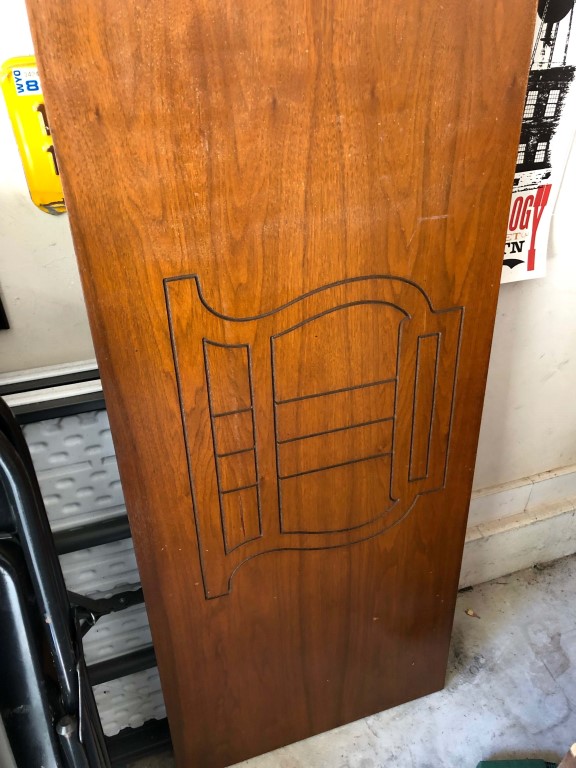
The piano plays fine, with the exception of a few keys that stick. After moving it, I will have it tuned and repaired.

Cleaning the keys
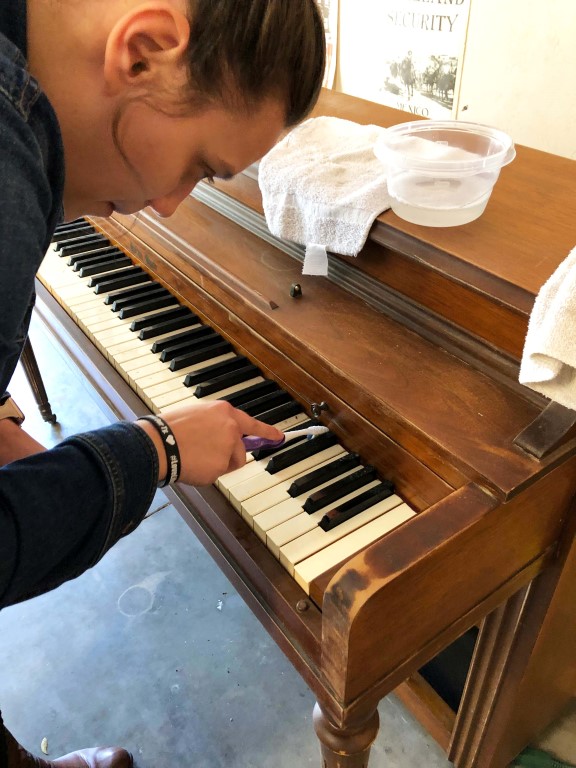
Julius Bach Mfgs. Hamburg, New York.
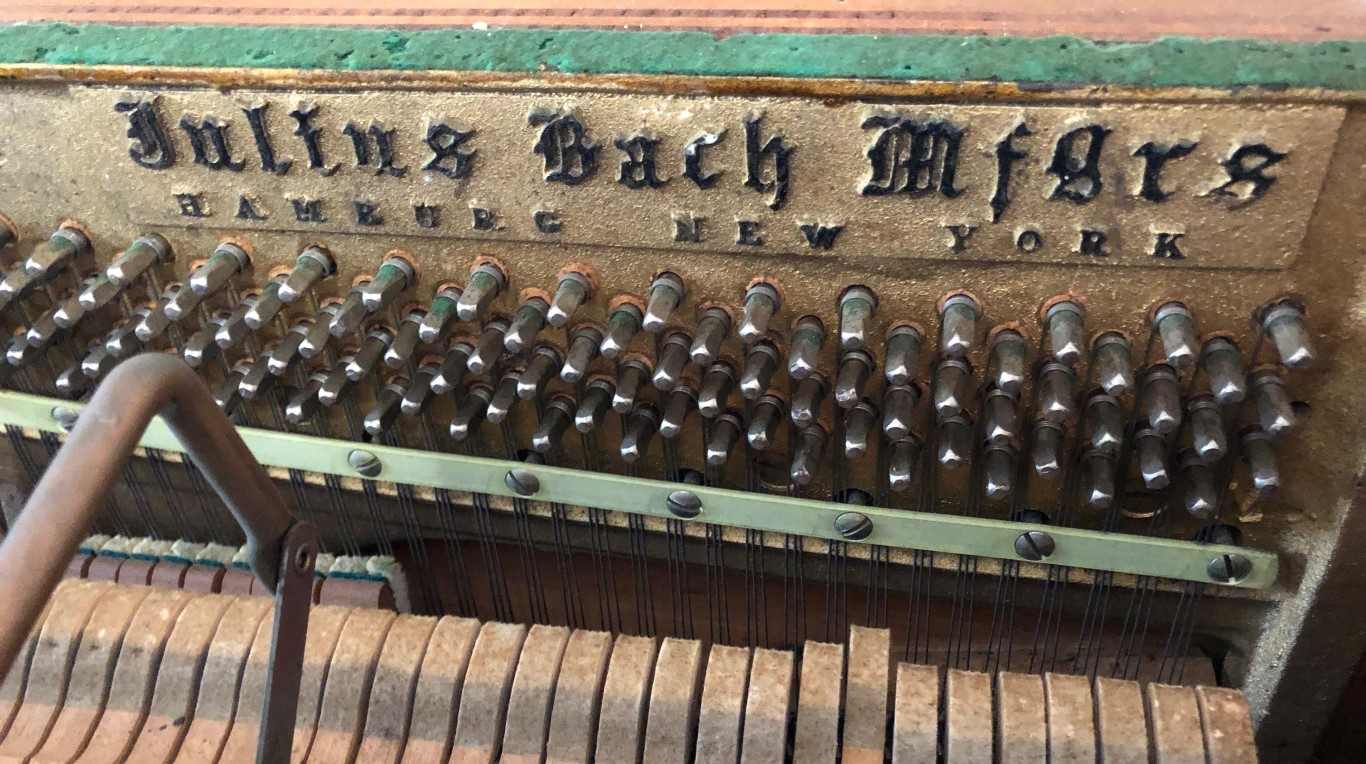
Damaged felt.
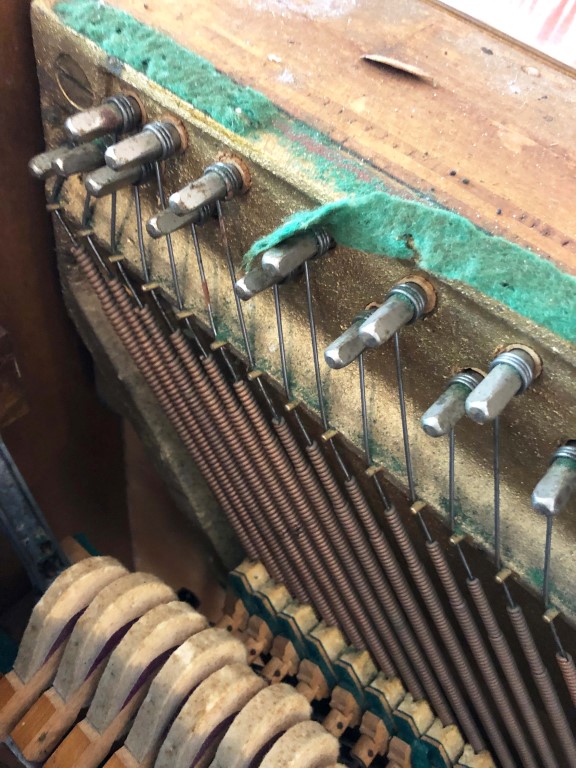
B for Bach.

Toothbrush cleaning area.
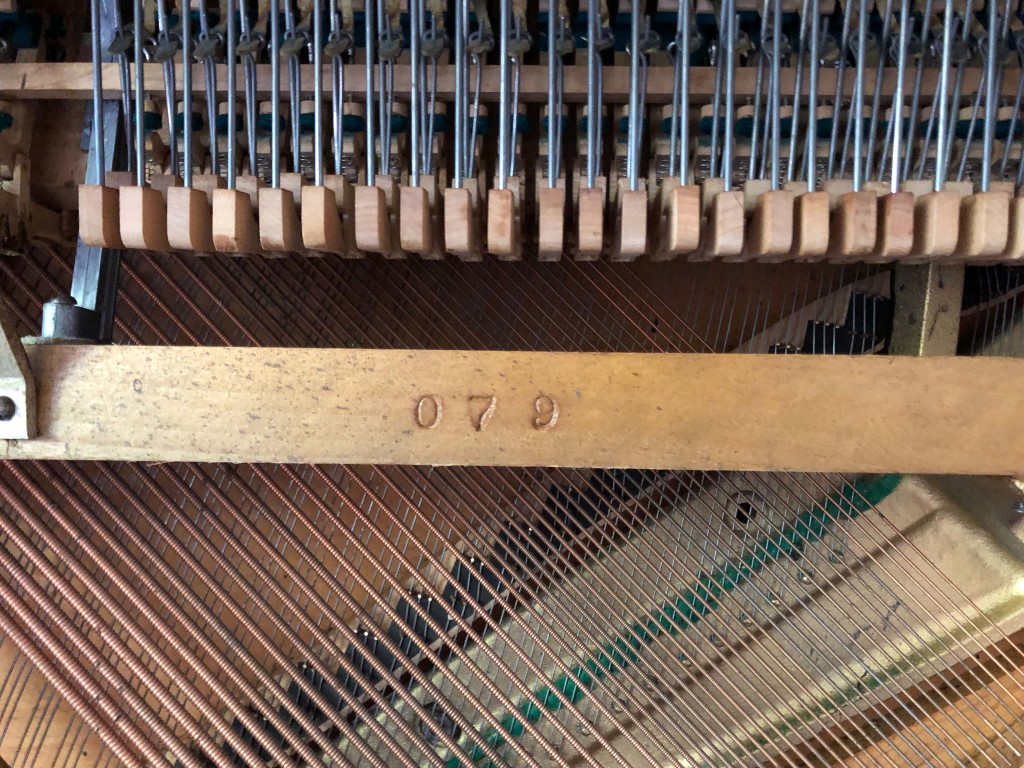
Before and after cleaning the piano base.
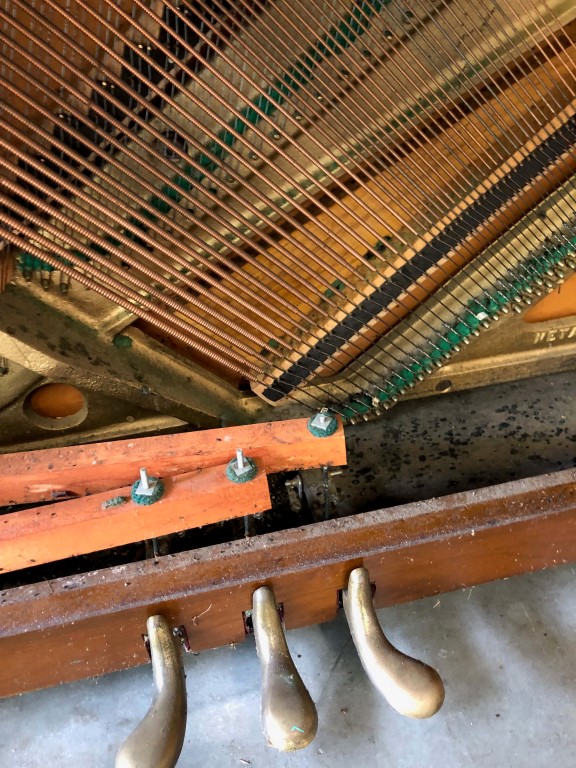
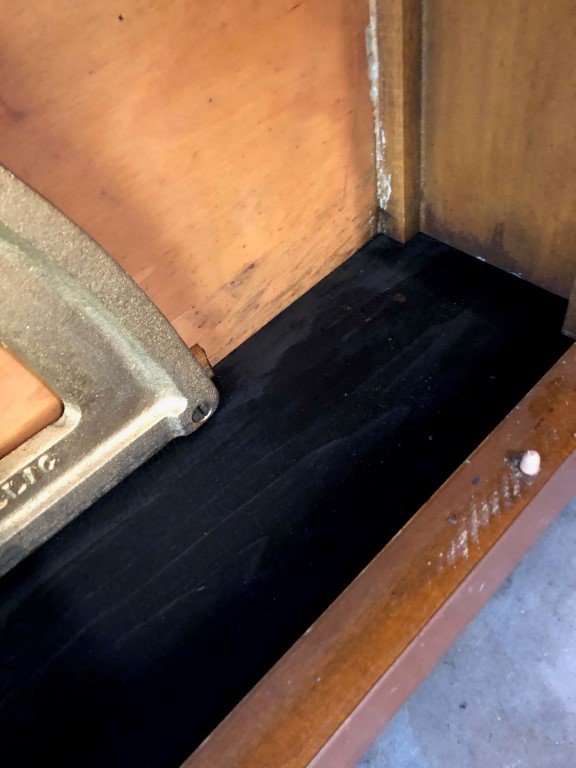
I bought an inexpensive sander for this project which proved invaluable. It made the process quick and easy.
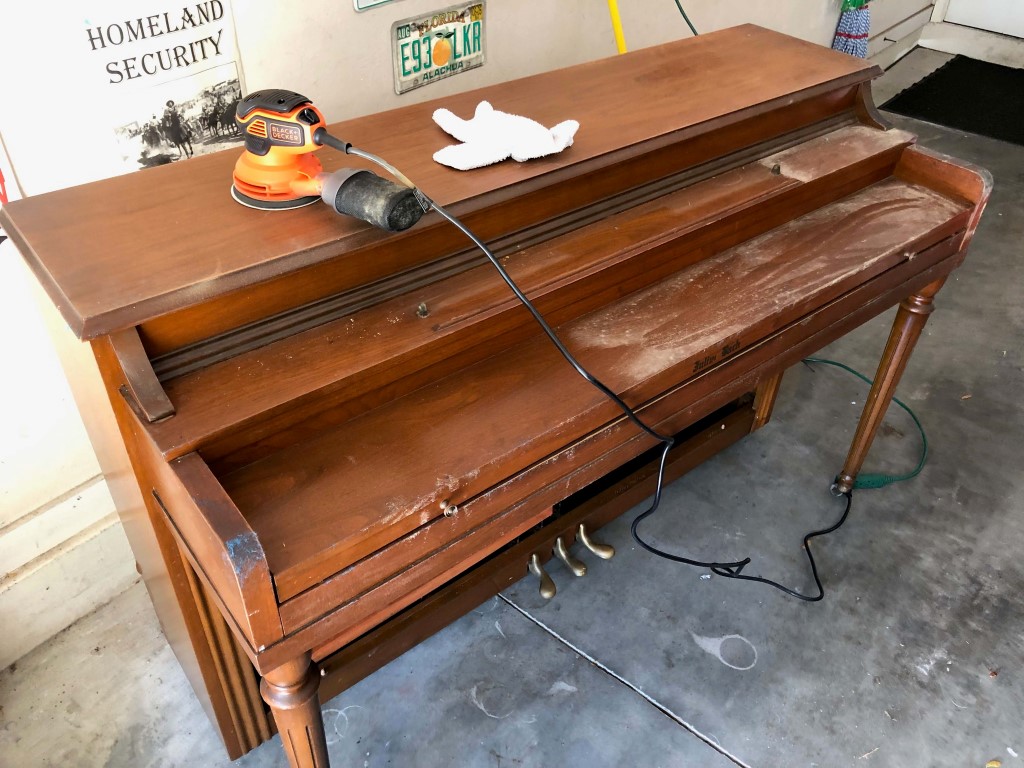
Coming along nicely.

After cleaning the dust from sanding, it was time to start painting. For this project I used Rustoleum Chalked Paint in Serenity Blue. This was my first experience with chalk paint - it dries fast and is easy to apply.

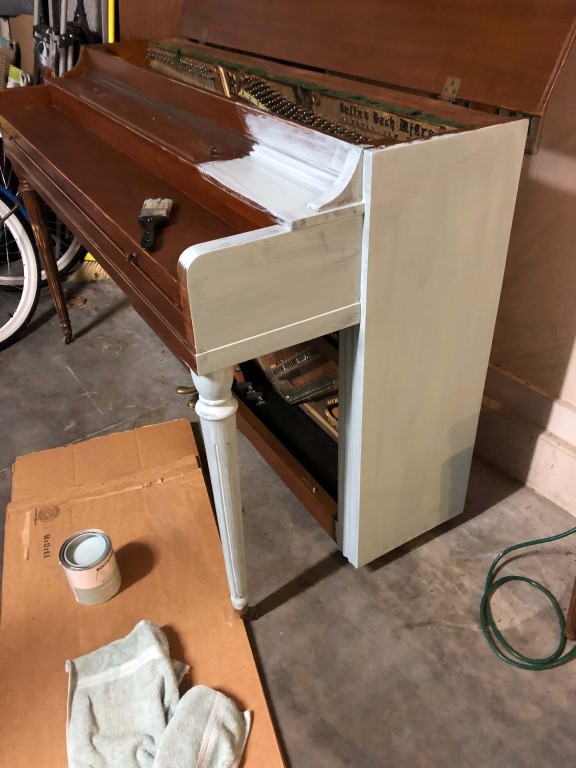
First coat with Watson napping.

Second coat with Watson napping.
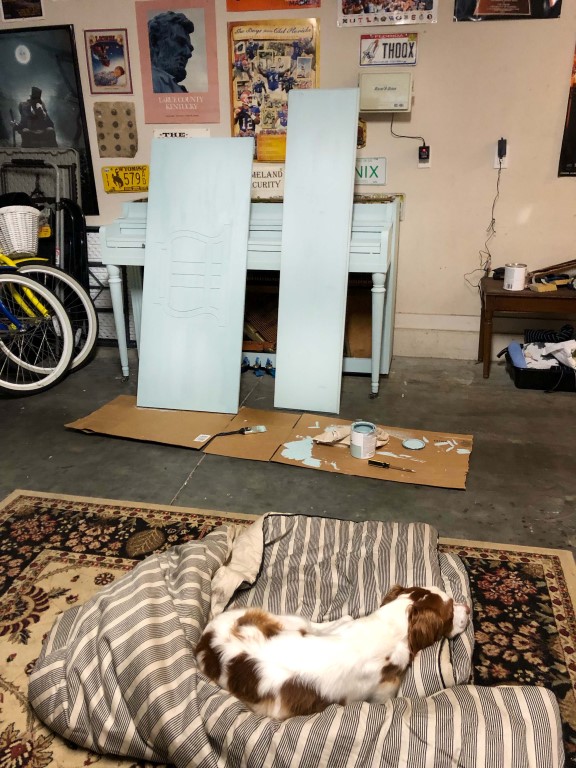
This is the piano with three coats. I have a bit left over for touchups if necessary. Notice it has a bit of a sheen without the wax applied.

My original plan was to use Rustoleum Chalked Matte Clear protective top coat. However, after reading horror stories of finishes turning yellow after application of this product, I decided to go with the Annie Sloan Chalk Paint Wax-Clear with wax brush. I expected to be able to buy this product online, however, it is only available in select stores, and was not available in the town I lived in. Luckily, my husband had traveled to Melbourne, Florida, for the weekend, where there happened to be a store that carried the wax. This worked out well, otherwise, the project would have been delayed.
Let the waxing begin!
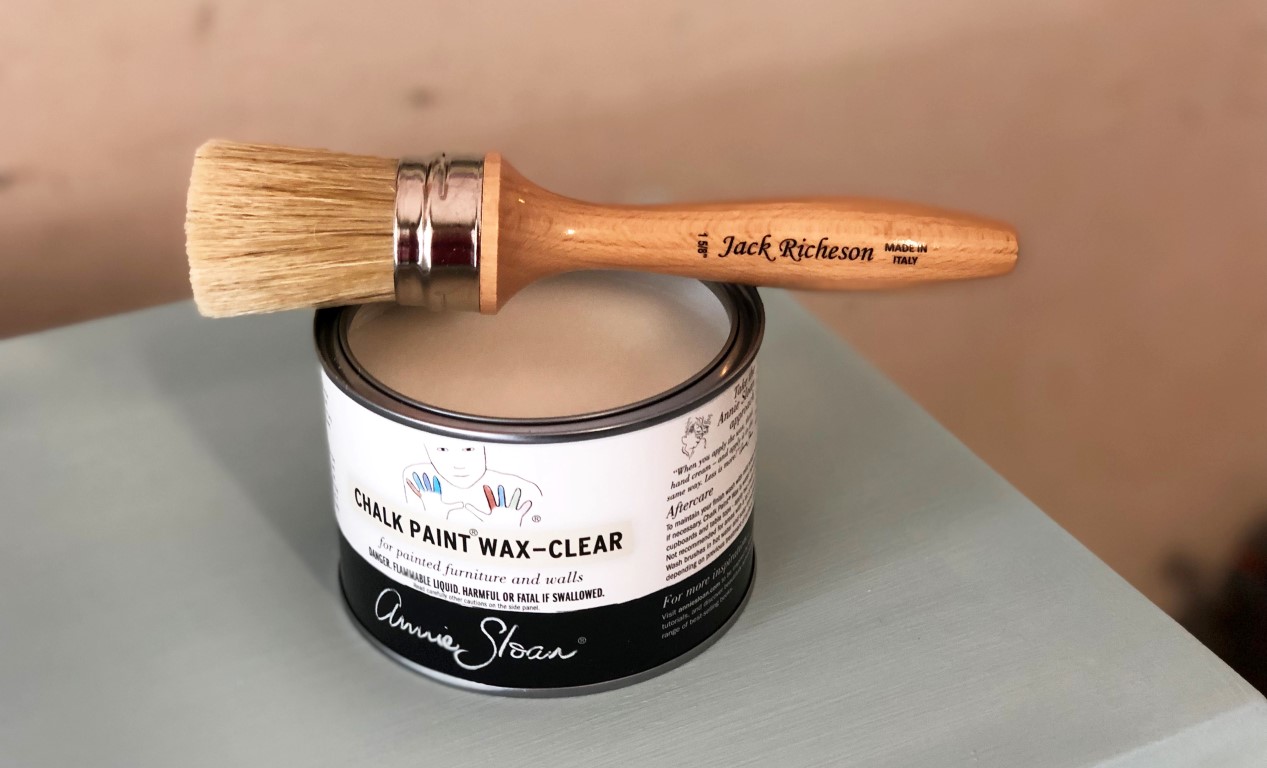
I applied a thin coat of wax, gently brushing into the stain, then wiped off the residue with a clean cloth. The wax went on dark, but has since dried to the original color (or at least close as I can tell).
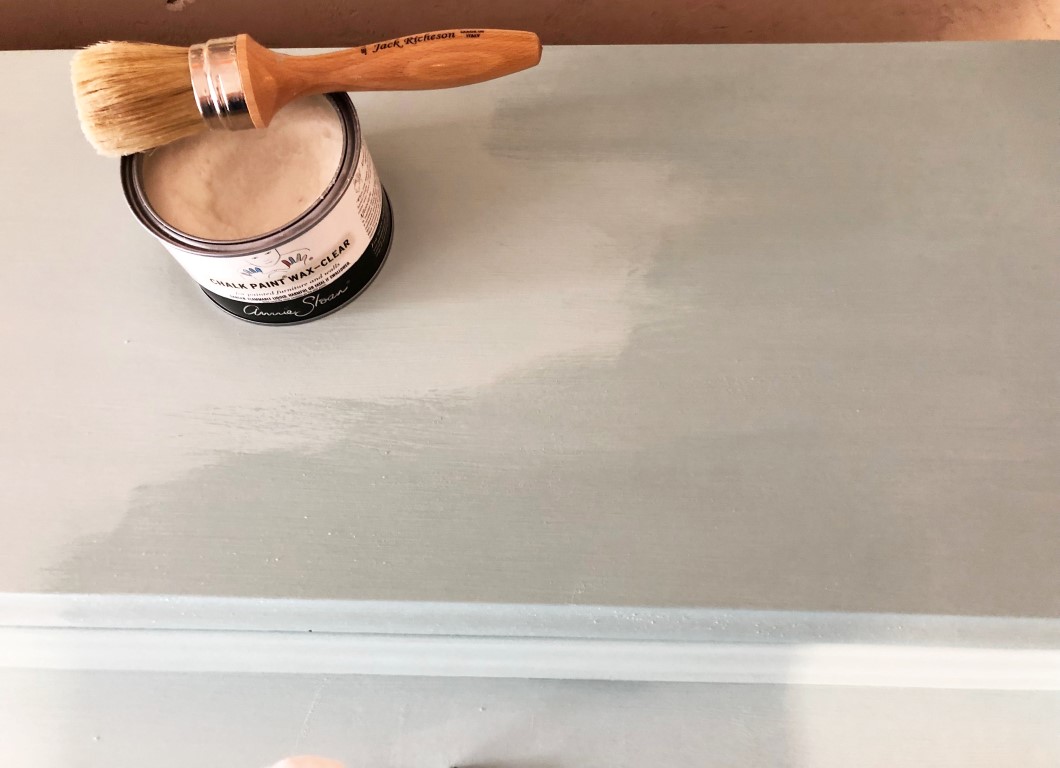
The wax is not quite dry in this photo, however, I'm very pleased with the near finished product! I may have to paint the garage floor after all the mess I have made.
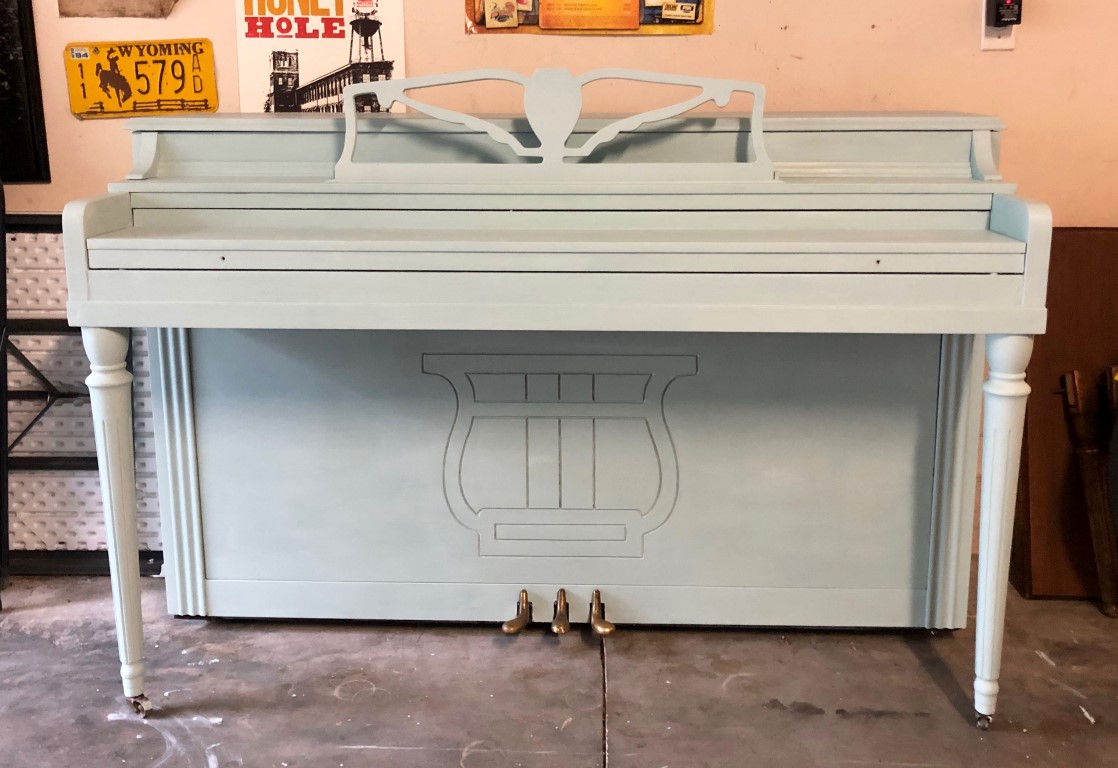
I bought these lovely vintage knobs from House of Antique Hardware. At one inch, the size was close to the original knob size of 5/8 inch.
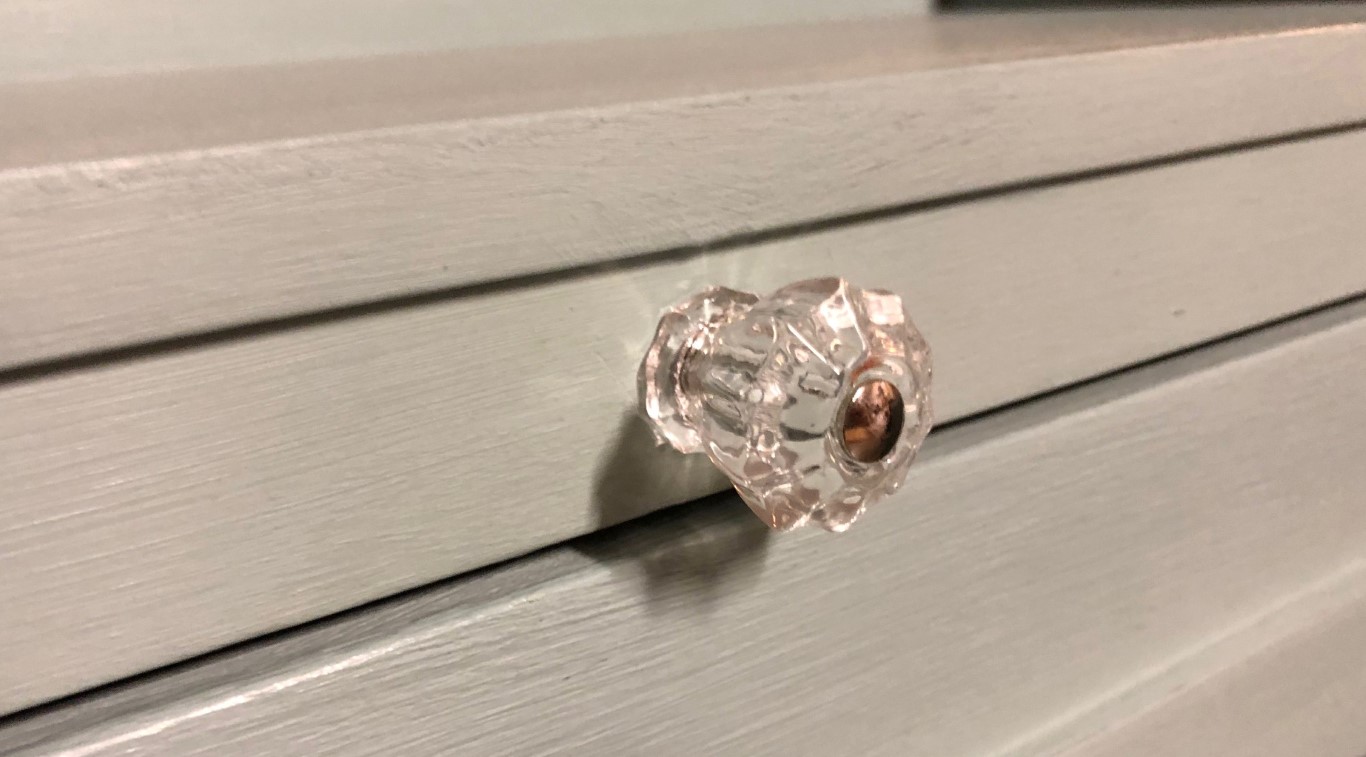
Before the piano is moved to my daughter's house where it will be tuned and repaired inside, I played a few of my favorite songs that I learned to play on this piano nearly 30 years ago. This particular tune is George Shearing's "Try A Little Tenderness." We are both a little rusty.
A small snippet of George Shearing's "Over The Rainbow."

Purchased from Joplin Music Co. June 17, 1972.

Total cost: $1028.16
